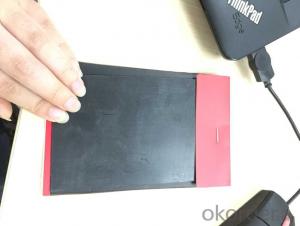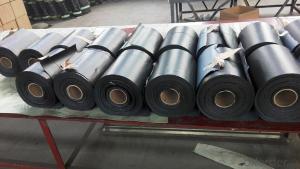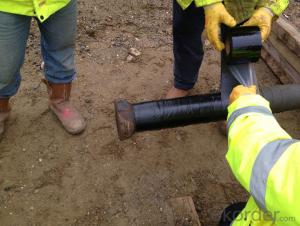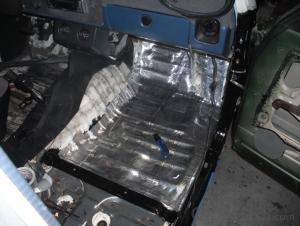SBS Elastomeric Bitumen Waterproof Roofing Membrane Adhensive
- Loading Port:
- Tianjin
- Payment Terms:
- TT OR LC
- Min Order Qty:
- 5000 m²
- Supply Capability:
- 100000 m²/month
OKorder Service Pledge
OKorder Financial Service
You Might Also Like
Quick DetailsType:
Waterproof Membrane, Waterproof membrane Place of Origin: China (Mainland)
Surface film: PE, SAND, SCHIST,aluminum Thickness: 2.0mm~5.0mm Length: 10.0m
Width: 1.0m Usage: waterproofing for roof, understand,etc
Packaging & DeliveryPackaging Details: 10 sq.m./roll export package or as requirment
Delivery Detail: 15 days after receipt of deposit.
Specifications3mm SBS modified bitumen waterproof membrane
1) 2--5mm
2) Base:PY/G
3) Surface:PE / S / M / Al
Application:
1. Make sure the base surface smooth, clean and dry(Moisture<9%), then paint the delicated agent on the base surface. start application till it is dry.< span="">
2. Application Method:
Heating the bottom surface of membrane and the roof deck surface by flam spray gun or other suitable appliances till the asphalt start to melt(not flowing), then spread. Using roller to compact the membrane so that it can firmly adhere to the base surface. The overlap on the long side should be 100mm and the short side should be 150mm.
3. After application, a careful inspection is required. Make sure there is no air bubble, no fold, no falling away etc to guarantee the waterproof life.
Package
Attentions for Construction
·
SBS / APP asphalt waterproof membrane, bituminous waterproof membrane
1. Membranes should be stored under dry and ventilated conditions.
2. Different types of membranes must be piled separately.
3. Under usual condition, storage period is one year since production date.
4. Membrane roll should be put vertically during transportation. It should be kept away
from sunshine and rainwater.
Installation Sketch point
Clean the substrate using broom or high pressure dusty cleaner.
Apply primer
Heat the membrane bottom using a high temperature flame gun.
Push forward while the primer and membrane oil melted
Use a roller to push hard the membrane surface to ensure it stick firmly
Application is named as "Torched on application".
1.Base processing: the base surface musts be clean,solid,level,dry;no grit,rift and loosing dust. For a large recess, fill it with cement mortar and then level it. Remove the protrusion and clean dust If working on base slab or lateral face,water lowering should be done.
2.Painting primer before laying the membrane, clean the dust on the surface of concrete base with dust catcher or dust-blower; then paint entirely with treatment agent of DY primer for waterproofing(for purpose of dust consolidation and high adhesive effect).
3.Heat to melt: place membrane correctly, fire torch, heat the membrane with base entirely, when the surface of the membrane is black and bright with a fusion layer, apply the membrane and press it into a solid and flat state.Before the membrane is cool, seal the edge of joint by float.
4.Requirements for lapping: There should be less than 3 layers of lapping, with the joint seams appearing as"T" type,avoid 4 layers of lapping.The width of longitudinal lapping is between 50 and 80mm,and of end-lap joint 100mm
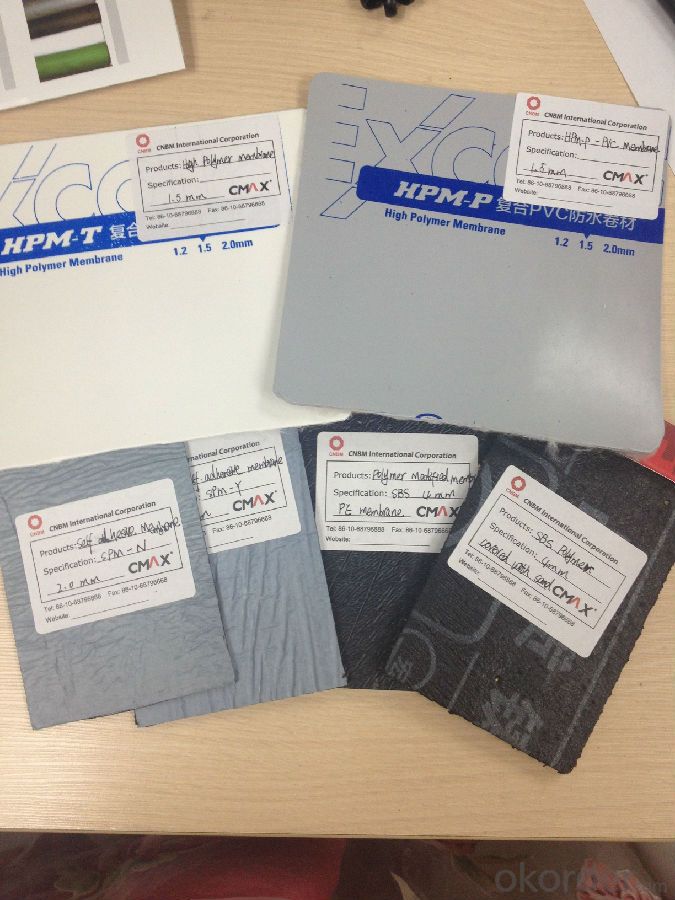
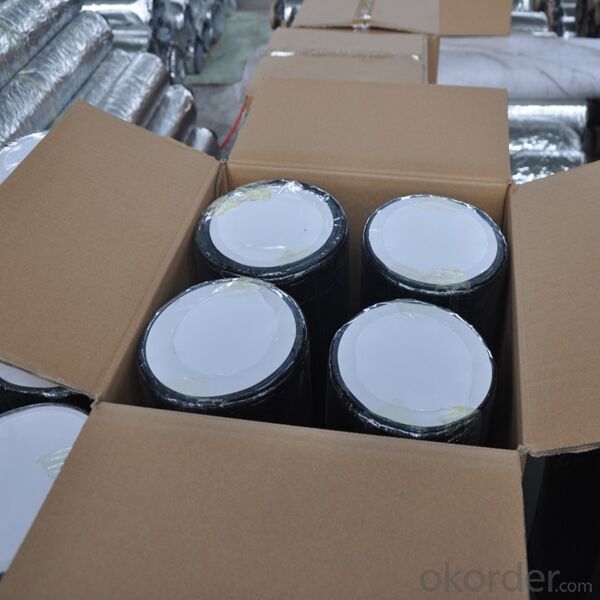
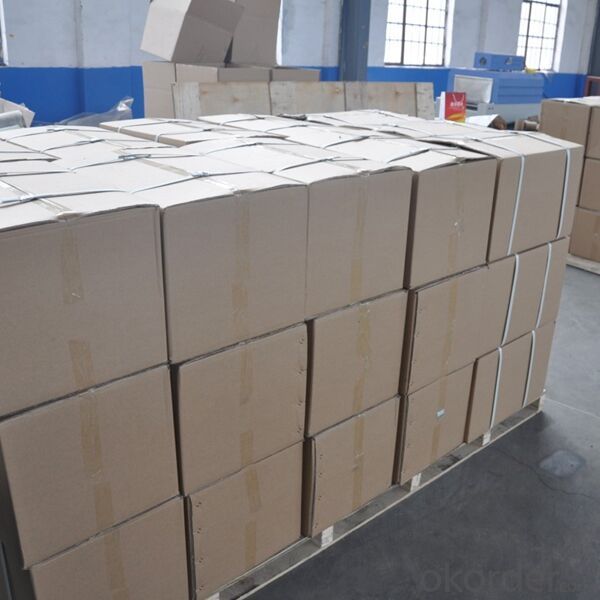


- Q:Can a waterproofing membrane be used for industrial facilities and factories?
- Yes, a waterproofing membrane can be used for industrial facilities and factories. Industrial facilities and factories often have areas that are exposed to moisture, such as basements, rooftops, and storage areas. These areas are prone to water leakage and damage, which can result in costly repairs and downtime. A waterproofing membrane is a highly effective solution for protecting these areas from water infiltration. It is a flexible and durable barrier that is applied to surfaces to prevent water from penetrating through. Waterproofing membranes are designed to withstand various environmental conditions, including temperature changes, UV exposure, and chemical exposure, making them suitable for industrial settings. By installing a waterproofing membrane, industrial facilities and factories can prevent water damage, mold growth, and structural deterioration caused by moisture. This helps to maintain a safe and functional environment for workers and equipment, while also ensuring the longevity of the facility. Additionally, a waterproofing membrane can help to improve energy efficiency by reducing heat loss through insulation and preventing water-related damage to HVAC systems. Overall, using a waterproofing membrane in industrial facilities and factories is a practical and cost-effective solution for ensuring the protection and longevity of the facility.
- Q:Can a waterproofing membrane be used for shower installations?
- Indeed, for shower installations, it is advisable to employ a waterproofing membrane to avert water intrusion into the walls, floors, or any susceptible areas that may result in harm. A waterproofing membrane serves as a shield, prohibiting water infiltration into the nearby regions. This is especially crucial in showers where water is incessantly utilized and splattered. By implementing a waterproofing membrane, you guarantee that your shower area remains impervious to water and safeguarded against any possible water-related destruction.
- Q:Can a waterproofing membrane be used for shower or bathroom installations?
- Yes, a waterproofing membrane can be used for shower or bathroom installations. The membrane acts as a protective barrier, preventing water from penetrating through the walls or floor and causing damage. It is commonly used in wet areas like showers and bathrooms to ensure a waterproof seal and to maintain the integrity of the surrounding surfaces.
- Q:Can a waterproofing membrane be used on cinder block surfaces?
- Yes, a waterproofing membrane can be used on cinder block surfaces. Cinder blocks are porous materials that can absorb water, so applying a waterproofing membrane can help prevent moisture from penetrating the surface and causing damage. The membrane acts as a barrier, preventing water from infiltrating the cinder blocks and protecting them from moisture-related issues such as mold, mildew, and deterioration. It is important to properly prepare the cinder block surface before applying the membrane to ensure proper adhesion and effectiveness. Additionally, choosing a waterproofing membrane specifically designed for cinder block surfaces will provide the best results.
- Q:Is a waterproofing membrane resistant to chemicals?
- Yes, a waterproofing membrane is typically resistant to chemicals. Waterproofing membranes are designed to provide a protective barrier against water and other liquids, including chemicals. These membranes are made of materials that are chemically resistant, such as PVC (polyvinyl chloride), TPO (thermoplastic olefin), or EPDM (ethylene propylene diene monomer). These materials have excellent resistance to a wide range of chemicals, including acids, alkalis, solvents, and oils. Additionally, waterproofing membranes undergo rigorous testing to ensure their chemical resistance and durability. However, it is important to note that the specific chemical resistance may vary depending on the type and quality of the membrane. It is always recommended to consult the manufacturer's specifications and guidelines to ensure the membrane's compatibility with specific chemicals.
- Q:Can a waterproofing membrane be used for a bridge deck?
- Indeed, a bridge deck can utilize a waterproofing membrane. In fact, it is customary to employ a waterproofing membrane on bridge decks to safeguard the structure against moisture infiltration, which may result in corrosion and deterioration. A waterproofing membrane acts as a protective shield, preventing water from permeating the concrete deck and ensuring the bridge's longevity and durability. Additionally, it can aid in minimizing the risk of freeze-thaw damage, which is particularly crucial in regions with severe weather conditions. All in all, the implementation of a waterproofing membrane on a bridge deck is a dependable approach to prolong its lifespan and preserve its structural integrity.
- Q:Can a waterproofing membrane be used for underground utility tunnels?
- Underground utility tunnels can benefit greatly from the use of a waterproofing membrane. This membrane, a thin layer of material, is applied to the surface of structures to prevent water or moisture from entering. It is commonly used in construction to safeguard buildings and structures from water damage. In the case of underground utility tunnels, where the risk of water infiltration is high due to surrounding soil and groundwater, a waterproofing membrane is extremely advantageous. It acts as a reliable barrier, effectively blocking water from entering the tunnel and causing harm to the utilities inside. There are various types of waterproofing membranes available, such as sheet membranes, liquid membranes, and spray-applied membranes. These membranes are typically made from materials like asphalt, modified bitumen, polyurethane, or rubberized asphalt. They are designed to be durable, flexible, and resistant to water and other environmental factors. Proper surface preparation is essential before applying a waterproofing membrane to an underground utility tunnel. The surface should be thoroughly cleaned, free of debris, and in good condition. Following the manufacturer's instructions, the membrane should then be installed, ensuring that all seams and joints are adequately sealed to create an uninterrupted water-resistant barrier. It's important to note that waterproofing membranes alone are not sufficient for protecting underground utility tunnels. They should be used in conjunction with other waterproofing measures, such as proper drainage systems, to ensure comprehensive water protection. Regular inspection and maintenance of the membrane are also necessary to promptly address any damage or deterioration. In conclusion, a waterproofing membrane is an effective solution for safeguarding underground utility tunnels against water infiltration. By establishing a strong and durable barrier against moisture, it helps maintain the integrity of utilities and prolong the lifespan of tunnel infrastructure.
- Q:Can a waterproofing membrane be used in combination with insulation materials?
- Yes, a waterproofing membrane can be used in combination with insulation materials. In fact, it is often recommended to use a waterproofing membrane in conjunction with insulation to protect the insulation from moisture damage and maintain its effectiveness. The waterproofing membrane forms a barrier that prevents water from reaching the insulation, ensuring its long-term performance.
- Q:Are waterproofing membranes resistant to mold and mildew?
- Yes, waterproofing membranes are resistant to mold and mildew. They create a barrier that prevents moisture from seeping through, which helps inhibit the growth of mold and mildew.
- Q:How does a waterproofing membrane handle construction joints?
- Construction applications require the use of a waterproofing membrane to prevent water from penetrating the structure. Specifically, in concrete structures where construction joints are commonly found, the membrane is engineered to effectively address these areas. During the construction process, joints are created to allow for movement between different sections of the structure. Unfortunately, these joints can also be vulnerable points where water can potentially infiltrate. To tackle this concern, waterproofing membranes are installed to ensure that these joints remain watertight. Different methods are employed to handle construction joints with waterproofing membranes. One popular approach is to directly apply the membrane over the joint, extending it beyond the joint edges. This creates a continuous waterproof layer that covers both the joint and its adjoining areas. Another technique involves the use of specially designed joint tapes or strips that are embedded within the membrane. These tapes or strips, typically made of materials like rubber or PVC, are placed directly over the joint before the membrane is applied. They serve as an additional layer of protection, enhancing the waterproofing performance of the membrane at the joint. Additionally, there are specialized waterproofing systems available that include pre-formed joint sealants. These sealants are designed to fit snugly into the joint, providing a tight seal against water intrusion. The membrane is then installed over the joint, ensuring comprehensive waterproofing coverage. In summary, a waterproofing membrane is specifically engineered to effectively handle construction joints by offering a durable and efficient barrier against water penetration. Whether through extending the membrane over the joint, utilizing joint tapes or strips, or incorporating pre-formed joint sealants, these membranes guarantee that construction joints remain watertight, thus safeguarding the structure from potential water damage.
1. Manufacturer Overview |
|
|---|---|
| Location | |
| Year Established | |
| Annual Output Value | |
| Main Markets | |
| Company Certifications | |
2. Manufacturer Certificates |
|
|---|---|
| a) Certification Name | |
| Range | |
| Reference | |
| Validity Period | |
3. Manufacturer Capability |
|
|---|---|
| a)Trade Capacity | |
| Nearest Port | |
| Export Percentage | |
| No.of Employees in Trade Department | |
| Language Spoken: | |
| b)Factory Information | |
| Factory Size: | |
| No. of Production Lines | |
| Contract Manufacturing | |
| Product Price Range | |
Send your message to us
SBS Elastomeric Bitumen Waterproof Roofing Membrane Adhensive
- Loading Port:
- Tianjin
- Payment Terms:
- TT OR LC
- Min Order Qty:
- 5000 m²
- Supply Capability:
- 100000 m²/month
OKorder Service Pledge
OKorder Financial Service
Similar products
New products
Hot products
Hot Searches
Related keywords
